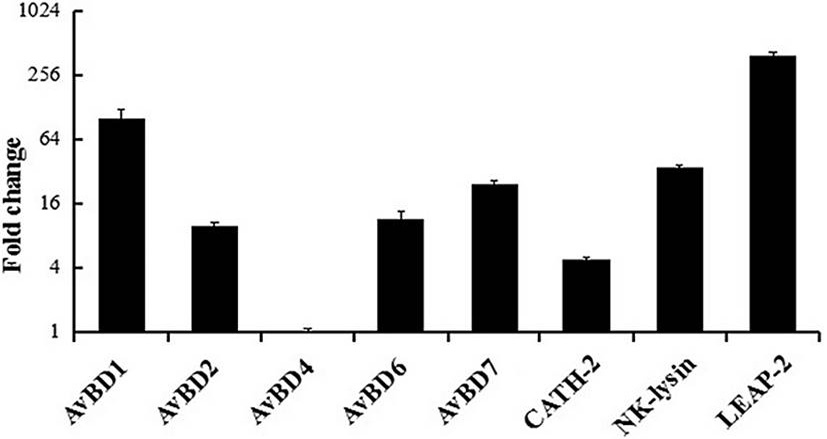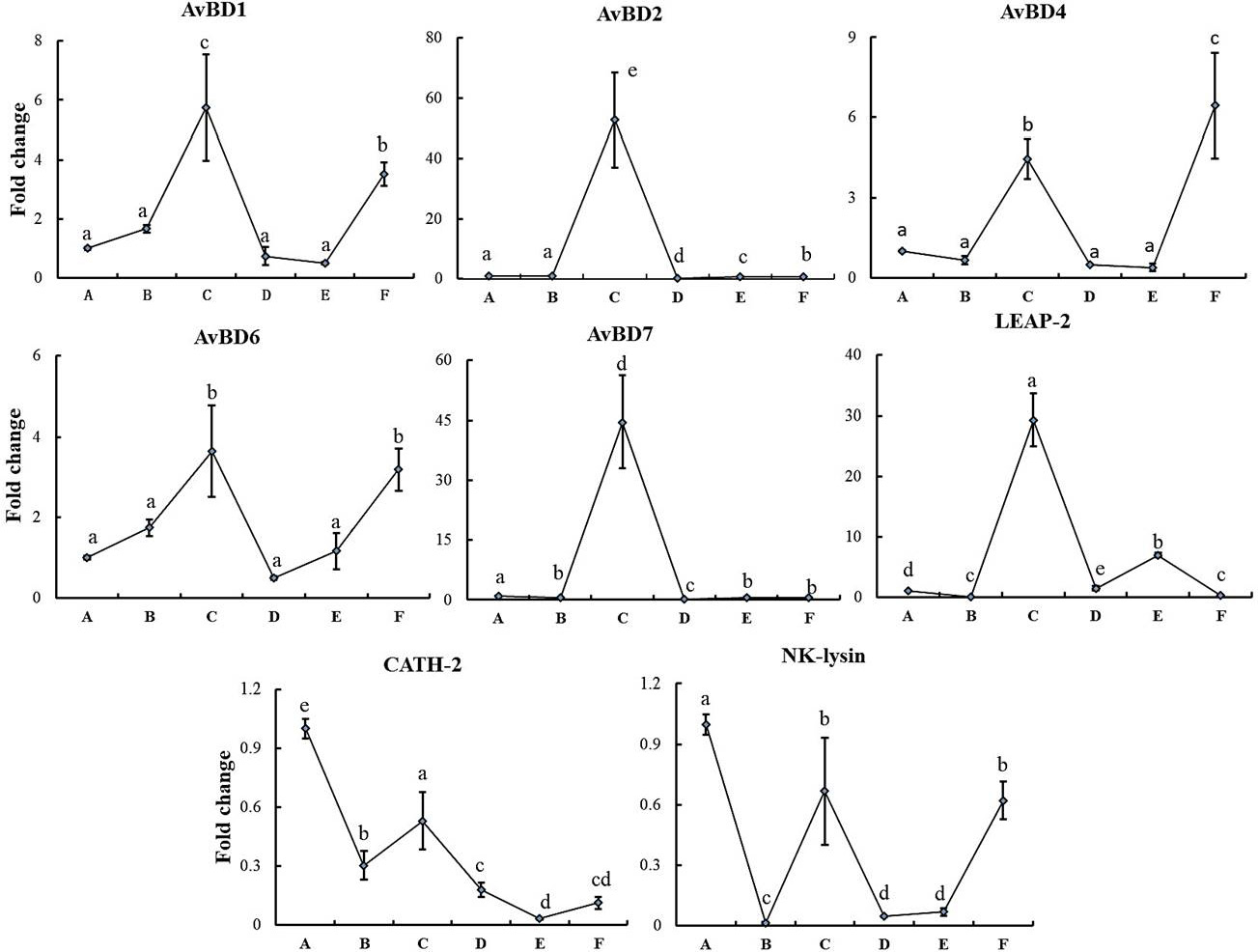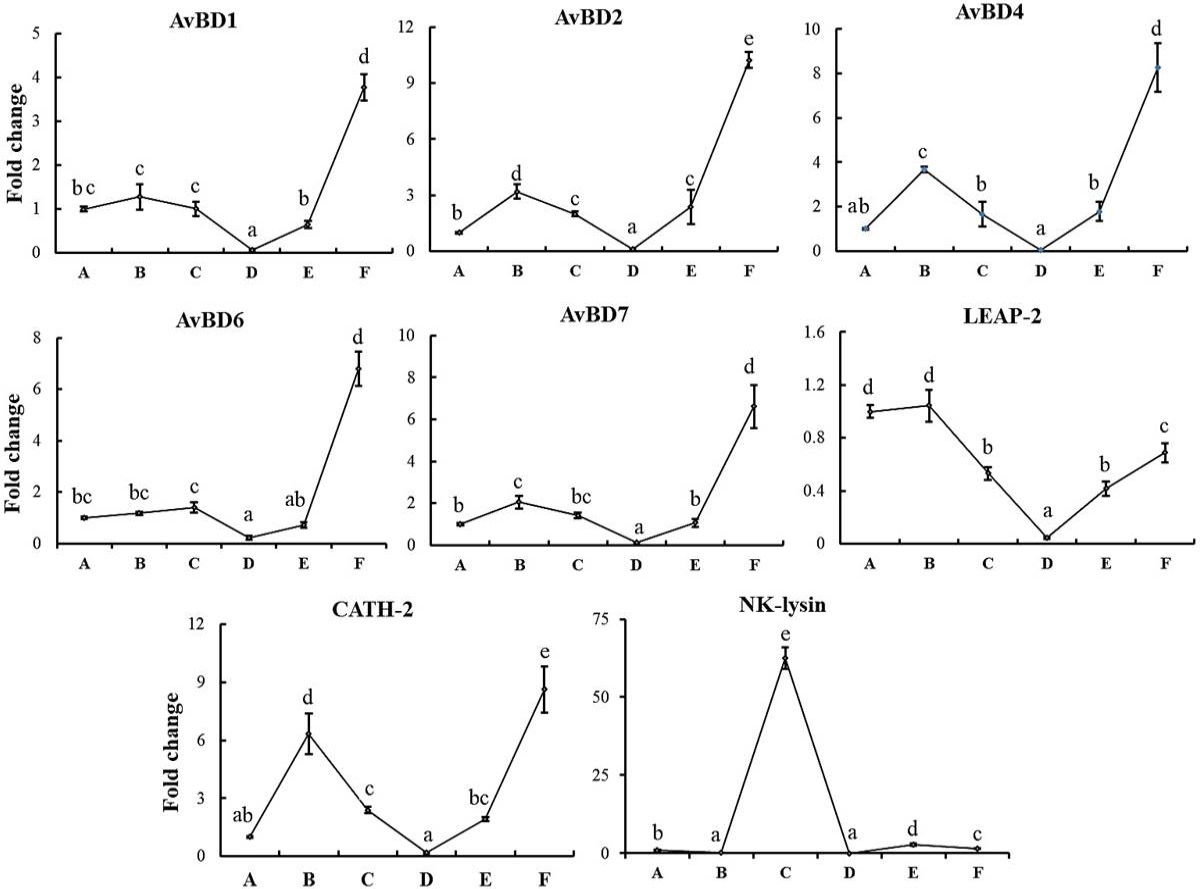The mRNA Expression of Host Defense Peptides in Chicken Erythrocytes are Highly Related to Tibial Dyschondroplasia and Induced by Recombinant Glutathione-S-Transferase A3 Protein
The mRNA Expression of Host Defense Peptides in Chicken Erythrocytes are Highly Related to Tibial Dyschondroplasia and Induced by Recombinant Glutathione-S-Transferase A3 Protein
Sheng Niu1, Ali-Raza Jahejo1, Fa-jie Jia1, Xin Li1, Guan-bao Ning1, Ding Zhang1, Hai-li Ma1, Wei-fang Hao2, Wen-wei Gao1, Yu-jun Zhao1, Shi-min Gao1, Jian-hui Li1, Gui-lan Li1, Fang Yan1, Rong-kun Gao1, Huan-chun Chen1,3 and Wen-xia Tian1,*
Expression pattern of HDPs transcripts in the un-stimulated erythrocytes of 23-d-old broilers relative to the house-keeping gene 18SrRNA.
The changes in the expression levels of mRNAs of HDPs in chicken erythrocytes of 12-day-old broilers. Basal diet groups (A, B and C) treated with 0, 20, 50 μg/kg of recombinant glutathione-S-transferase A3 (rGSTA3) protein, and thiram-containing diet groups (D, E and F) treated with 0, 20, 50 μg/kg of rGSTA3 protein. In each panel, different lowercase letters (a–e) indicate statistically significant differences (P < 0.05).
The changes in the expression levels of mRNAs of HDPs in chicken erythrocytes of 23-day-old broilers. Basal diet groups (A, B and C) treated with 0, 20, 50 μg/kg of recombinant glutathione-S-transferase A3 (rGSTA3) protein, and thiram-containing diet groups (D, E and F) treated with 0, 20, 50 μg/kg of rGSTA3 protein, respectively. In each panel, different lowercase letters (a–e) indicate statistically significant differences (P < 0.05).













